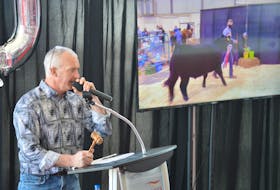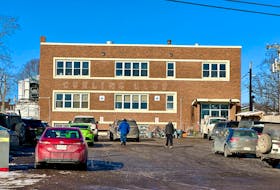Rudy Croken
Guest Opinion
In 1905, the first internal combustion car — a 1903 Ford — arrived on the Island. By 1908, there were seven vehicles, and what an uproar they caused among the horse-loving rural Islanders. Meetings were held first in Milton Station, then in Charlottetown, Summerside and in many rural communities calling for regulations and restrictions on these “terrifiers of horses and old ladies.”
When a bill to allow the running of cars three days a week was brought before the Island legislature, instead of putting in regulations, the automobile was banned. Premier Francis Haszard stated that if the automobile was a danger four days a week, then it must be a danger seven days a week. The car was banned by unanimous vote — not one MLA supporting the automobile.
Despite the best efforts of the auto lobbyists to have the bill repealed, this total ban lasted until 1913. In July of 1913, a new government under Premier John A. Mathieson passed a law allowing automobiles to run on any road, and in any village or town where 75 per cent of the residents signed a petition requesting the automobile be allowed to run three days a week — Mondays, Wednesdays and Thursdays — but not on Sundays or market days.
This resulted in a patchwork array of roads opened with automobile drivers being forced to hire a team of horses to haul their auto from roads open to automobiles over areas closed to automobiles, to the next opened road. Letters to the editors of Island papers poured in opposing the automobile and meetings were held in community halls across the Island in an attempt to rid the Island of this “Instrument of Death.”
SOME IN FAVOUR, MOST OPPOSED
From 1913 to 1916, there were few areas except Charlottetown, Summerside, and the Union Road to Brackley opened to the automobile. In August of 1913, an Anti-Automobile Association was formed in the Bedeque area. Bedeque residents Horace Wright and Will Callbeck were the leaders, with members being mainly from eastern Prince County.
This was followed in 1914 with a Prince Edward Island Anti-Automobile Association. Members had to pledge not to vote for any candidate favoring the automobile. While the Bedeque area anti-automobile group was very active, the P.E.I. Anti-Automobile Association failed to gain much traction. After the election of 1915, more roads were opened to the automobile and increasing numbers of automobiles arrived on the Island. As more roads opened to the automobile, individual acts of sabotage against the auto increased. Those opposed to the automobile would bury old hay mower blades in the roads to flatten the tires of unsuspecting drivers, string barbed wire across roads, and trees would be felled across the roads in an unsuccessful attempt to rid the Island of these Terror or Devil Wagons.
By the end of 1915, many Islanders were coming out in support of the automobile, especially those who had remained neutral.
Islanders could see where the automobile was running in other provinces and the United States without major issues, and felt they could run successfully on the Island as well. By the end of 1915, there were only about 50 cars. By May of 1917, there were approximately 300 automobiles and the Anti-Automobile Associations had all but disappeared. Throughout 1917 and 1918, increasing numbers of Islanders were accepting the automobiles. Areas such as Miscouche, that had welcomed the automobile with open arms, were now calling on the government to allow the automobile to run seven days a week. Meetings held to oppose the automobile attracted fewer and fewer people and letters to the editor against the automobile had all but stopped.
This is the first of a three-part series about the history of automobiles on P.E.I. by Rudy Croken, author of Ban the Automobile: Instrument of Death. Prince Edward Island is preparing to celebrate the 100th anniversary of the automobile being allowed to drive on its roads seven days a week.








